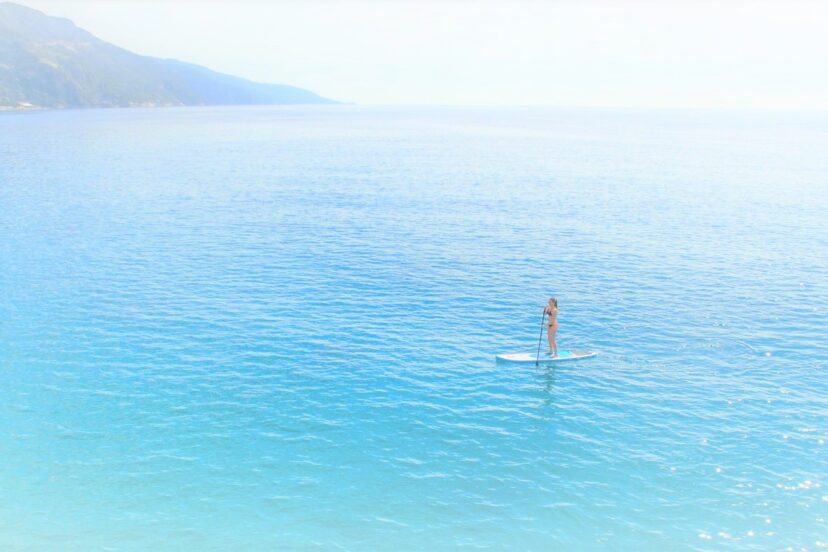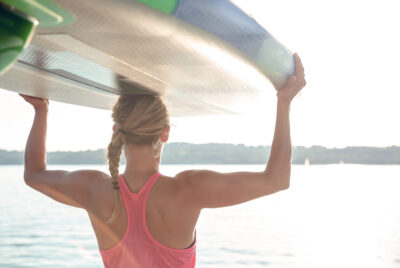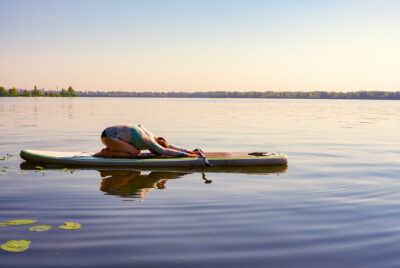You’ve been paddle boarding for a while, and it’s time to upgrade your beginner board. Our…
How To Stand Up Paddle Board: Tips for Beginners

Whether you’re looking to get outside, get a workout in, or simply to play in the water, paddle boarding is a fun way to do all of the above. If you’re just getting started with the sport, you’re in the right place. Our beginner’s guide to how to stand up paddle board has everything you need to get started.
Gear needed to paddle board
● Paddle board. We’d recommend Roc’s Inflatable Stand Up Paddle Board With Premium Accessories.
● Lifejacket. The right life jacket for you is entirely dependent on your size.
● Paddle leash. This generally comes with your paddle board.
● Paddle. We recommend starting with something like Woowave’s SUP Paddle.
● Sunscreen. Ideally, it should be at least SPF 50 and water-resistant.
Those are the basic items you need to get started. As far as clothing goes, it can be pretty weather dependent. If it’s chilly, you may want a dry suit. If the water is warm, you can wear your typical beach attire. The main goal is to wear clothes that you can move freely in, that won’t weigh you down if they get wet.
How to paddle board safely
You want your time out on the water to be fun and enjoyable, and one way to help ensure that is to take a few, basic safety precautions.
● Always wear your lifejacket. Furthermore, make sure that your lifejacket is properly fitted to your body. A lifejacket that is too big or too small can fall off in the water.
● Keep your paddle leash on at all times, as well. Your paddle leash attaches your paddle to your ankle, so if you fall, the wind doesn’t carry your board away. If that happens when you’re far from shore, it may be difficult to swim back. Your board leash keeps your board right where it needs to be, so you can keep your focus on recovering from the fall.
● Bring a friend with you, if possible. There’s a high probability that you’re going to fall the first couple of times you’re out on the water. In fact, you may fall many, many times until you find your balance. Having a buddy is important in case you need help.
● If you ever do venture out alone, make sure someone knows where you’re going and when you’re expected to be back.
Tips for beginners
● To mount your board, make sure the water is deep enough, but not too deep. The board’s fin should be able to float, and the water should be at about knee level on you.
● Don’t try to stand right away. Start from a kneeling position and spend some time finding your balance. You can even practice paddling this way.
● Once you feel ready, keep your knees bent but bring them up to your chest, so you’re in a crouching position. Straighten out your spine so that you’re looking straight ahead and aren’t hunched over, and then slowly straighten your legs into a standing position.
● When standing, keep your feet hip-distance apart, and centered on the board. Your back should be straight, and your head and eyes pointed forwards. This position will provide the most balance.
● To paddle, scoop into the water with the entire blade of your paddle. Start at the tip of the board, a few inches out, and scoop backward. Lift out when you reach the point in the board where your feet are at.
Parting words
Experience is really the best teacher. Now that you know the paddle boarding basics, just get out there and give it a try!



